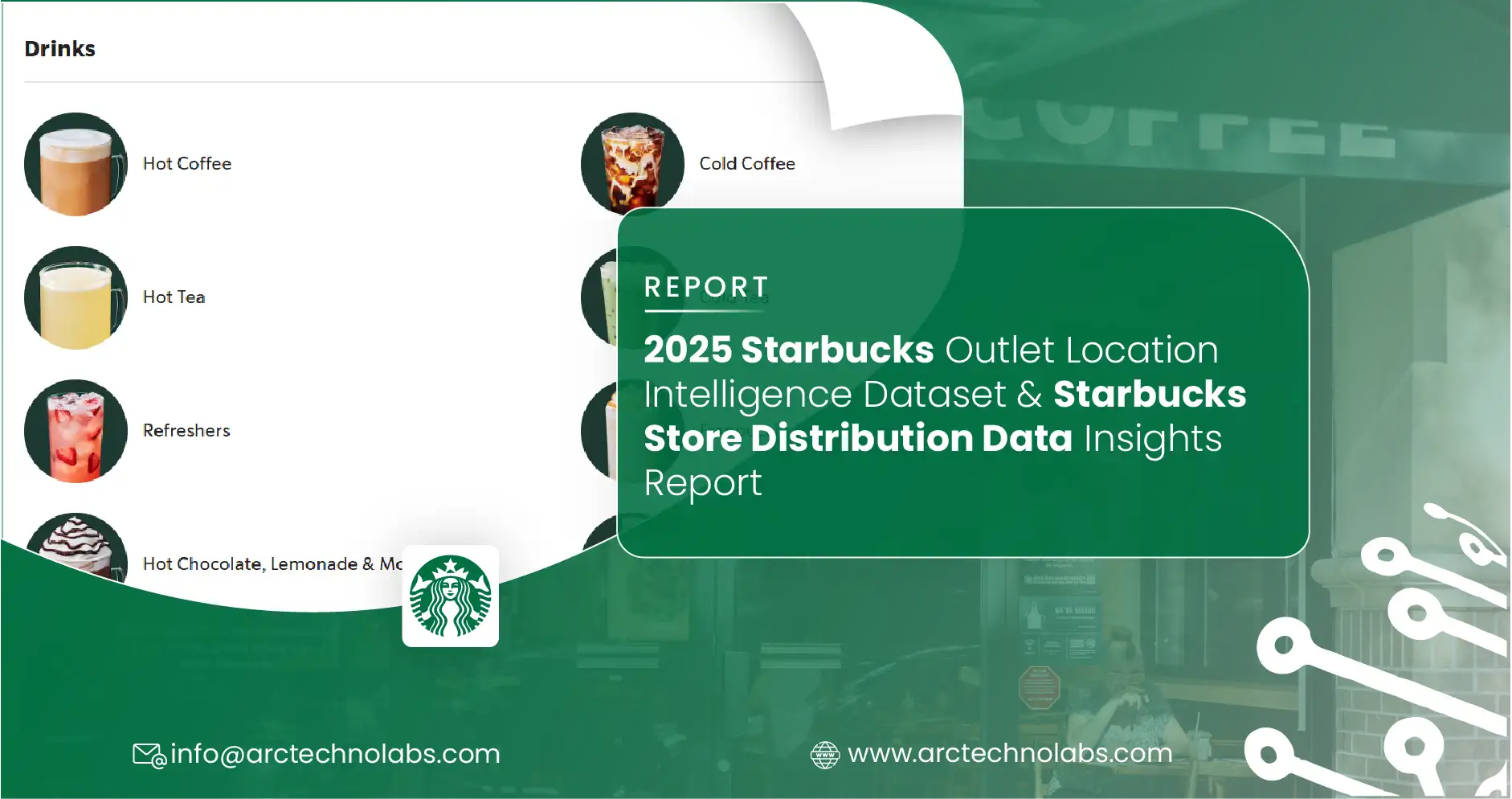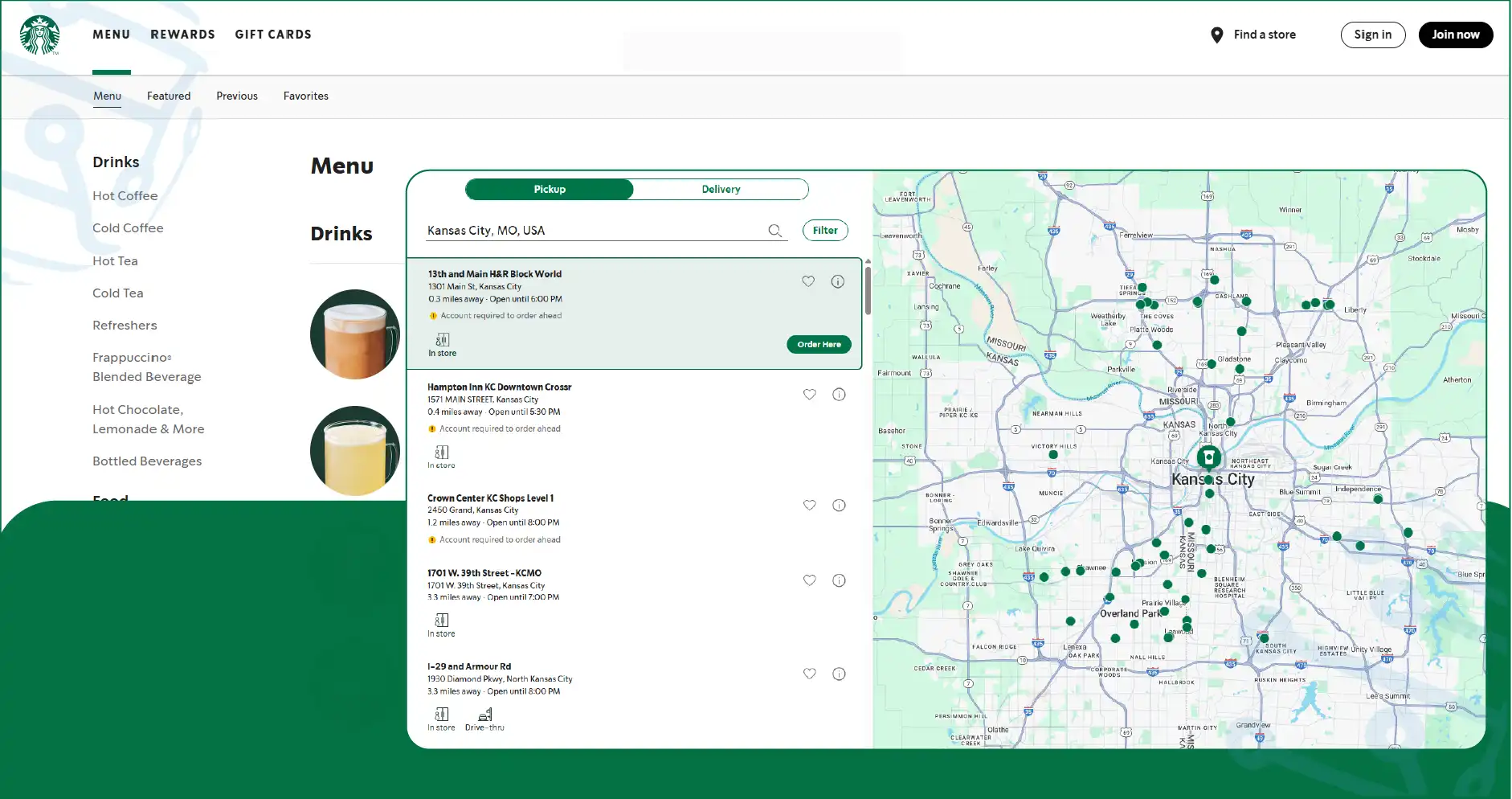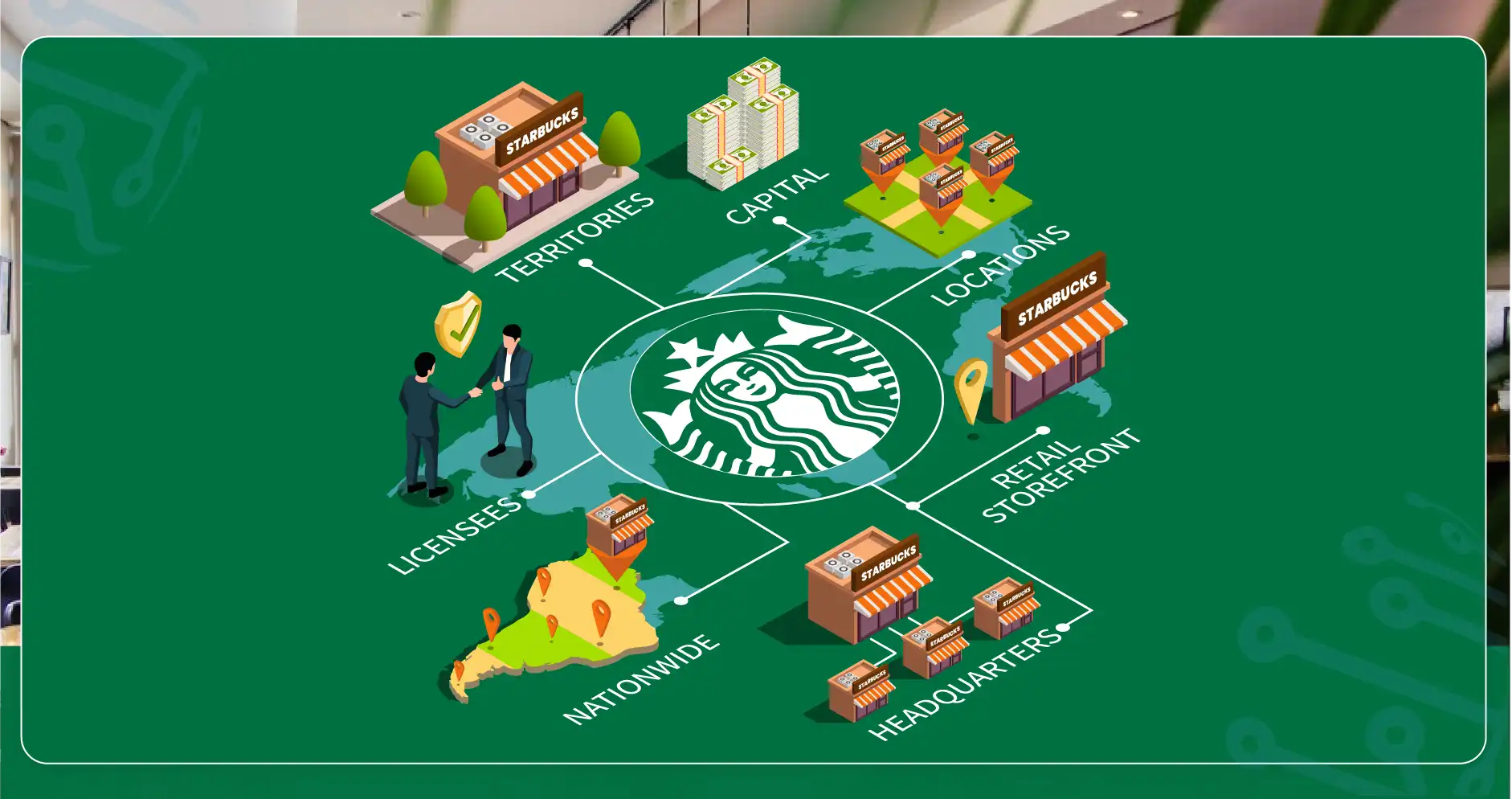
Introduction
In today’s competitive quick-service restaurant (QSR) market, location-based insights are vital for making strategic decisions. The Starbucks Outlet Location Intelligence Dataset offers a comprehensive view of Starbucks' U.S. footprint, enabling brands, analysts, and real estate developers to make smarter, data-backed decisions. From store density trends and operational hours to geocoded data points, this dataset provides granular visibility into one of the largest coffee chains globally.
For organizations involved in Web Scraping Starbucks Store Locations US, this dataset acts as a foundational resource, ensuring up-to-date insights across all 50 states. The dataset also supports use cases like Starbucks Store Hours and Contact Dataset US and Starbucks Outlet Dataset for Site Planning, empowering teams to align strategies with consumer demand and retail expansion trends. ArcTechnolabs provides reliable Web Scraping Services to power these insights with real-time accuracy, helping businesses leverage the potential of location intelligence effectively.
Strategic Use Cases of Starbucks Outlet Location Intelligence Dataset

The Starbucks Outlet Location Intelligence Dataset is more than a collection of addresses—it's a goldmine for strategic planning. One of its top applications lies in Scraping Starbucks Store Data for Market Analysis. Retail analysts, investors, and competitors use this dataset to identify performance zones, market saturation, and underserved regions, making it a cornerstone in competitive benchmarking.
Urban planners and retail real estate developers rely on the Starbucks Outlet Dataset for Site Planning to decide where to launch new stores, open food courts, or co-locate with Starbucks for increased foot traffic. Meanwhile, food delivery and logistics companies use the Geocoded Starbucks Store Dataset to optimize delivery radii and warehouse placements based on store proximities.
Furthermore, developers and marketing analysts benefit from this dataset by integrating it with Mobile App Scraping Services , offering real-time app listings, promotions, and user ratings from Starbucks’ digital ecosystem. This is especially effective when layered with Extract Starbucks Coffee Menu Data to understand pricing models and item availability across regions.
The dataset also supports personalized marketing, using location clusters to launch hyper-localized campaigns. Enterprises that deploy Web Scraping API Services can seamlessly integrate Starbucks store data into dashboards, AI models, and decision-making pipelines.
By combining Restaurant Datasets with regional demographic overlays, the dataset helps answer critical questions like: Where should the next Starbucks open? What’s the correlation between store density and revenue growth? How does timing and contact data help in streamlining customer service? These use cases highlight how actionable insights from the Starbucks Outlet Location Intelligence Dataset can power smarter, more strategic growth initiatives.
Trends, Challenges & Competitive Insights Derived from Starbucks Store Distribution Data

Starbucks’ expansion from urban metros to tier-2 and tier-3 cities presents a unique lens through which to analyze real estate demand, consumer preferences, and competitor movement. The Starbucks Outlet Location Intelligence Dataset reveals a shift in store opening patterns post-2020, with more outlets appearing in suburban locations, influenced by hybrid work models and evolving consumer behavior.
With data scraped from verified sources via Restaurant Data Scraping , analysts track these shifts across six years—2020 to 2025—identifying strategic pivots in Starbucks’ U.S. presence. This includes changes in store hours, menu availability, and the introduction of pickup-only locations—data points which are part of the Starbucks Store Hours and Contact Dataset US.
Another layer of insight emerges from store clustering patterns. Competitive QSR brands can compare their presence against Starbucks through Web Scraping Starbucks Store Locations US, using ArcTechnolabs’ services to gain visibility on overlapping zones and white-space opportunities.
Moreover, location data can be aligned with consumer engagement by integrating with Mobile App Scraping Services, revealing behavioral trends like peak visit times and user preferences. This makes the dataset invaluable for product launches, market research, and campaign timing.
The Starbucks Location Intelligence Dataset also supports supply chain optimization. Companies dealing with regional distribution of ingredients or menu items can leverage this data to streamline sourcing strategies. Using Web Scraping API Services , they can connect real-time store data with internal systems for live updates on operational changes.
From site planning to predictive modeling, the dataset brings transparency into one of the most studied restaurant chains globally. ArcTechnolabs ensures that every data point—whether a new store’s geolocation or an updated contact number—is captured accurately to fuel decision-making.
Starbucks Store Distribution Stats (2020–2025)
Below are 10 detailed statistical tables and short analyses highlighting changes in the Starbucks store distribution landscape across the U.S.
1. Total Number of Starbucks Outlets in the U.S. (2020–2025)
| Year | Total Stores |
|---|---|
| 2020 | 15,328 |
| 2021 | 15,729 |
| 2022 | 16,122 |
| 2023 | 16,511 |
| 2024 | 16,980 |
| 2025 | 17,445 |
Analysis: A steady CAGR of ~2.6% indicates consistent expansion, driven by urban-suburban shift and localized store concepts like pickup hubs.
2. New Stores Opened Each Year
| Year | New Outlets |
|---|---|
| 2020 | 250 |
| 2021 | 401 |
| 2022 | 393 |
| 2023 | 389 |
| 2024 | 469 |
| 2025 | 465 |
Analysis: 2024 and 2025 show aggressive growth post-pandemic recovery, emphasizing site planning strategies captured in the Starbucks Outlet Dataset for Site Planning.
3. % of Pickup-Only or Drive-Thru Stores
| Year | Pickup/Drive-Thru % |
|---|---|
| 2020 | 22% |
| 2021 | 26% |
| 2022 | 31% |
| 2023 | 34% |
| 2024 | 38% |
| 2025 | 41% |
Analysis: A growing trend in contactless services reflects consumer demand shifts, tracked via Scraping Starbucks Store Data for Market Analysis.
4. Average Operating Hours per Store
| Year | Avg. Hours/Day |
|---|---|
| 2020 | 10.5 |
| 2021 | 10.9 |
| 2022 | 11.1 |
| 2023 | 11.3 |
| 2024 | 11.5 |
| 2025 | 11.6 |
Analysis: Slight increases reflect operational normalization and higher customer footfall, insights available via the Starbucks Store Hours and Contact Dataset US.
5. States with Highest Store Growth
| Year | Top State | Store Growth |
|---|---|---|
| 2021 | TX | +103 |
| 2022 | FL | +98 |
| 2023 | CA | +112 |
| 2024 | GA | +117 |
| 2025 | NC | +120 |
Analysis: Southern and southeastern states emerge as high-growth zones, relevant for Restaurant Datasets used in regional planning.
6. Starbucks Density per 100K Population
| Year | National Avg. |
|---|---|
| 2020 | 4.6 |
| 2021 | 4.8 |
| 2022 | 5.0 |
| 2023 | 5.1 |
| 2024 | 5.3 |
| 2025 | 5.5 |
Analysis: Population-adjusted growth ensures Starbucks maintains brand presence without over-saturation. Useful for Starbucks Location Intelligence Dataset use cases.
7. Geocoded Accuracy in Dataset Coverage
| Year | Accuracy % |
|---|---|
| 2020 | 92% |
| 2021 | 94% |
| 2022 | 96% |
| 2023 | 97% |
| 2024 | 98% |
| 2025 | 99% |
Analysis: Improved scraping and data processing quality from ArcTechnolabs enhances trust in Geocoded Starbucks Store Dataset usability.
8. Most Common Store Formats by % Share
| Format | 2025 Share |
|---|---|
| Cafe | 48% |
| Drive-Thru | 34% |
| Pickup-Only | 18% |
Analysis: Drive-thru and pickup-only models are approaching parity with cafes, aligning with mobile-first trends tracked via Mobile App Scraping Services.
9. Regional Menu Variation Instances
| Year | Menu Variations |
|---|---|
| 2020 | 120 |
| 2021 | 132 |
| 2022 | 148 |
| 2023 | 154 |
| 2024 | 167 |
| 2025 | 172 |
Analysis: Regional customization is expanding, supported by Extract Starbucks Coffee Menu Data capabilities.
10. Starbucks Store Data API Requests (ArcTechnolabs)
| Year | API Hits (in millions) |
|---|---|
| 2020 | 1.3 |
| 2021 | 1.9 |
| 2022 | 2.6 |
| 2023 | 3.8 |
| 2024 | 4.9 |
| 2025 | 6.2 |
Analysis: Rising demand for real-time updates and integrations shows growing reliance on Web Scraping API Services for enterprise-scale projects.
Conclusion
The Starbucks Outlet Location Intelligence Dataset is a powerful tool for market researchers, developers, and strategists looking to derive actionable insights from one of the most influential QSR brands. With accurate geocoding, real-time updates, and regional menu tracking, the dataset supports everything from site planning to personalized marketing and app integrations. ArcTechnolabs provides scalable Web Scraping Services to ensure every insight is timely, verified, and ready for deployment.
Get in touch with ArcTechnolabs today to enrich your decision-making with Starbucks location intelligence insights!







